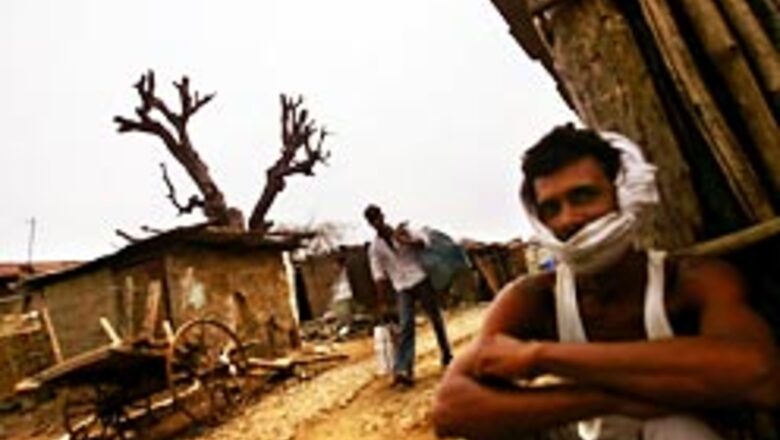
views
For the past couple of weeks, foreign policy mandarins have begun dreaming of a larger role for India in world affairs, in the belief that the Obama administration would lean on its shoulders to polish up the US’ tarnished image and frayed relations in various parts of the world.
According to this school of thinking, India’s time has come to take its rightful place on the world-stage as a strategic heavyweight. Such feelings are only understandable. After all, foreign affairs experts like the idea of a moment making history.
Unfortunately, they may be disappointed.
India’s influence will grow not as a muscle-flexing strategic ally of the United States, but as an economic powerhouse of Asia where nearly half the world’s population lives. Much will depend on its ability to contribute to economic thought and development.
Prime Minister Dr Manmohan Singh put it eloquently on the eve of his departure for the G-20 summit: “The Indian economy, in fact, has the potential to contribute to global economic growth. My participation in the (G-20) Summit demonstrates this changing landscape of the international economy.”
Foreign policy wonks in the capital could do with a serious dose of reality check. After all, India is not quite a diplomatic duke, at least not yet. Take for instance, the theory that India is now a “swing” state in world affairs. ‘Swing states’ is a term that is used in elections for areas where no one party has overwhelming support. Swing states are where the elections get decided. So the allusion is that India is not completely committed to any one global power. “There is a view among leading foreign policy experts that India is indeed such a force on the world stage. That may be delusional,” says Sundeep Waslekar, president of Strategic Foresight, an international strategic affairs expert based in Mumbai.
There was a time when India was seen as the voice of the developing nations. It was perceived as a friend in West Asia and lent gravitas to the Non Aligned Movement. Foreign affairs experts feel that today India is seen firmly in the US camp. “India seems to swing from one extreme position to the other. Either we will bring down the trade talks or we will run to the US and offer them our air bases to launch military operations,” says one strategic affairs expert. International diplomacy is far more sophisticated and demands that an emerging superpower be able to balance many conflicting interests.
India’s record in central Asia shows that it has found it very difficult to cement its fledgling friendship with the US and Israel without damaging its age-old relations with Iran. Some have suggested that India would play a larger role in resolving conflicts, especially in central Asia. That is unlikely as Obama has hinted that his administration would be open to dialogue with Iran. In fact, even the Bush administration has toned down its sabre-rattling and reached out to Iran President Mahmoud Ahmadinejad. That leaves little room for India to get involved in the region. As the new administration in Washington deviates from the foreign policy approach of the George Bush era, India is likely to find itself with less work as a strategic ally.
PAGE_BREAK
“Obama is likely to work closely with China instead of pursuing a containment policy,’’ says M K Bhadrakumar, a former diplomat and foreign policy commentator. Bhadrakumar says that Washington would want to improve its relations with Russia, Europe and Asia. But as the world’s pre-eminent power and with a perceptibly less hawkish president at the helm of affairs, it would hardly require India’s help in mending relations with others. Moreover, India has not endeared itself to Islamic Asia by sidling up to a warmongering America and Israel.

Its own relations with the US could dramatically change depending on Obama’s approach. “The Bush Administration had a relatively clear and straightforward policy of deepening and broadening ties. Unless Obama quickly reaffirms Bush’s policy on India, I fear the relationship will drift, especially if he tries to get involved in the Kashmir dispute as Bill Clinton did. Sadly I think this may happen, because the Democrats don’t have the courage to stand up to Pakistan or China.
Obama inparticular won’t want to appear rash or to take big risks that could derail his domestic agenda,” says Rahul Sagar, Assistant Professor, Department of Politics, Princeton University. That could mean that diplomatically India could find itself a bit isolated and a little less listened to. “India has no role to play, frankly. No one takes it seriously. India’s foreign policy is best summarised as jugaad (ad-hoc workaround). Where is the long-term strategic planning and execution? When will India have a powerful and meritocratic intelligence service? Its military is ably led but poorly funded; its leaders are scared to stand up to either China or Pakistan. It has squandered the chance to expand the reforms necessary to make its economic diplomacy effective,” says Sagar.
Winding down the war in Afghanistan and helping development in that country is also likely to be a top priority for the US president-elect. In that endeavour, Pakistan, which shares its boundary with Afghanistan, will be more valuable even though India has good relations with the Afghan administration and is helping rebuild it.
The country’s voice as a global strategic force might be feeble, but its position as an economic power is certainly growing.
“India can be a model of development in Asia, particularly Central Asia,” says Stephen Walt, Renee Belfer Professor of International Affairs at Harvard University’s Kennedy School of Government.
Rising inequality levels around the world have stiffened resistance to global trade and market systems.
“When Prime Minister Manmohan Singh speaks at (international gatherings like) the G-20 summit, he will be listened (to) with care,’’ says Bimal Jalan, former RBI governor. Jalan believes that India is in a very strong economic position today and except British Prime Minister Gordon Brown, there is hardly any world leader of Singh’s experience and stature as an economist.
Having shown the world to some extent that financial conservatism and a combination of state and market could spread economic gains and welfare to a larger number of people, India can legitimately hope to preach the virtues of equitable economic growth. It is in discovering new ways of economic growth and managing economies that India can help the US repair the damage done by the cowboys on Wall Street.
PAGE_BREAK
“That is the way our bread is buttered,’’ says Jalan, who helped create a robust financial architecture that paved the way for the Indian growth story which has so far withstood the economic storm raging in world markets.
Unlike China, which the world thinks will provide some consumption demand support, India’s approach will have to be different. “India needs more savings so clearly it cannot be the consumption engine to the world,” says Professor Mukul Asher, a specialist in public sector economics and social security issues in Asia at the Lee Kuan Yew School of Public Policy at Singapore.
India can do two things. One, it can keep its own economic house in order. “India is a more balanced economy. It does not rely too much on trade. It can show the way on the complementary nature of the state and the market,” says Asher. And two, it can help the G-20 remake global financial architecture.

One of the key things that the G-20 will discuss is better regulation of financial market participants. “I think the large financial institutions that function across multiple countries need to submit themselves to regulation so that we know exactly what they are doing. There should not be any hiding place. No off-balance sheet transactions,” says Professor Willem Buiter, Professor of European Political Economy, European Institute, London School of Economics.
Indian capital market regulators and RBI—who have always wanted more stringent regulations—can help there by enforcing those rules in India. Since India is going to be the recipient of large sources of capital flows over the longer term, stringent regulation will be of real help.
The other place where India can show the path is making its public sector banking system more efficient. “We now know that centralisation of credit is a bad idea because state is a miserable allocator of capital. We can’t leave it to private forces. And we also know that unless there is an explicit guarantee from the state there is no such thing as a safe bank,” says Professor Buiter. So the Indian regulatory system—with its emphasis on prudence, high capital adequacy norms, shunning of leverage and deposit guarantees—is what other countries can learn from.
Former Indian diplomat, Bhadrakumar, says, “The best shot for India to have more influence in world affairs is to manage its economy well. How we manage the crisis and sustain economic growth will add weight to our opinion and actions worldwide.”
If India keeps its economic ship steady and the G-7 nations start listening to nations like India, China, Brazil, and the Middle East—places where the savings and the consumption engines now reside—then India would have done a world of good.
At this point that’s all it needs to do—just lead by example rather than delusions of power.
Liked the article? Download as PDF













Comments
0 comment